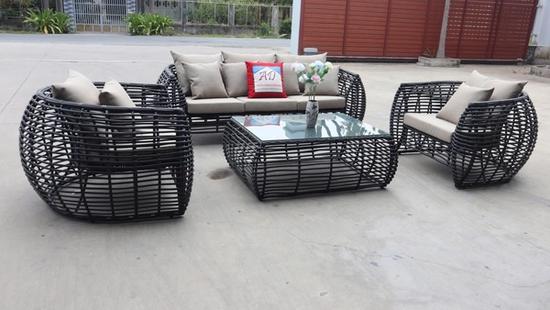
how to create a gallery wall
Published: 10/17/2024
There are few things more picture-perfect than a well-considered gallery wall. Endlessly flexible and customizable, it creates an instant narrative on even the biggest, blankest of canvases – a fresh white wall. When it comes to finishing off a room, the gallery wall also takes the pressure off hunting down a singular does-it-all piece of art. No wonder it’s an interior designer’s go-to solution. It’s not, however, as simple as buying a few pieces and clustering them together. From prints to placement, there’s a real art to curating a cohesive collection. “Gallery walls work great in so many spaces, but there’s a lot of planning required,” says Anthropologie Home Stylist Taylor Daroci. “You want to create a thoughtful gallery, not a random hodgepodge.” Here, Taylor shares tips for transforming your wall into a personal gallery that complements your space.
Keep It Consistent
A unified aesthetic is essential if you want to create a photogenic gallery wall. If it’s helpful, imagine your wall as a literal art gallery – would you expect to find these pieces at the same exhibition? “Ensure there is cohesion through the color palette, border, and genre of the artwork,” says Taylor. “Here, the various feminine portraits complement each other beautifully, ultimately creating a harmonious collection.” It’s also important to keep your canvas in mind. “Consider the size and shape of your wall,” says Taylor. “Have a tall and narrow area? Mirror the space through artwork that is framed in a similar manner.”
Tell a Story
The most successful gallery walls do more than paint a pretty picture – they tell a compelling tale. Place your favorite gem in the center and build upon its narrative, creating a unified spirit with pops of color that echo back to the centerpiece. “If you’re a traveler and collector, opt for a more eclectic curation to feature your assorted treasures,” suggests Taylor. “Start by selecting a large focal piece to hang first – this will help establish and anchor the story. Next, layer in additional works in a variety of sizes to evoke a ‘collected over time’ appeal.”
Find Your Frame
Frames shouldn’t be an afterthought. Put the same amount of time into selecting your frames as you did your prints – they set the stage for the art and help shape the collection. “Consider frames as a key part of the overall look, and think of how you want them to impact the mood,” says Taylor. “I’m really loving gold frames. They immediately elevate a collection and can soften a more graphic edge.” If you love a piece of art but the frame doesn't match your aesthetic, Taylor suggests choosing your own. "Our custom framing program allows you to pick from a curated selection of classic, high-quality frames," she says. There's something for everyone – from traditional to boho to modern. "Art is already so personal, so being able to choose a frame you love makes it that much more special," adds Taylor.
Plan Your Placement
Once you’ve decided on the visual direction for your gallery wall and gathered all the pieces together, you can carefully consider the arrangement of your artwork. But don’t even think about grabbing a hammer quite yet. “Play with different layouts on the floor and find the one you like best,” suggests Taylor. “Cut scrap paper to the size of each piece of artwork, then use painter’s tape to mock-up the arrangement on the wall. You’ll gain a good sense of how the artwork fills the space and can make any necessary adjustments – and avoid any unnecessary holes in your wall.”
Challenge Conventions
Think outside of classic art forms. Using a mixture of media – from paint to frame-free textiles to wall-strung sculptures – can create real freshness and depth. “A gallery wall is not limited to two-dimensional, traditionally framed artwork,” says Taylor. “Think of your home as a true gallery and showcase any tactile artwork or textiles that you love collecting – a framed skein of vintage fabric can create a great visual resting place when mixed in with other works. Consider common motifs in a variety of scales, and stick with a thoughtfully curated color palette to allow the texture to sing.”